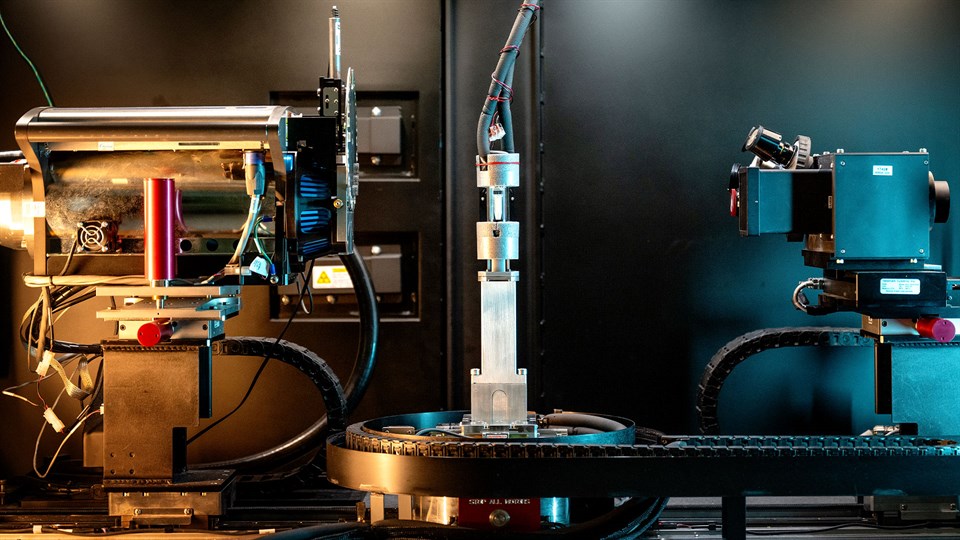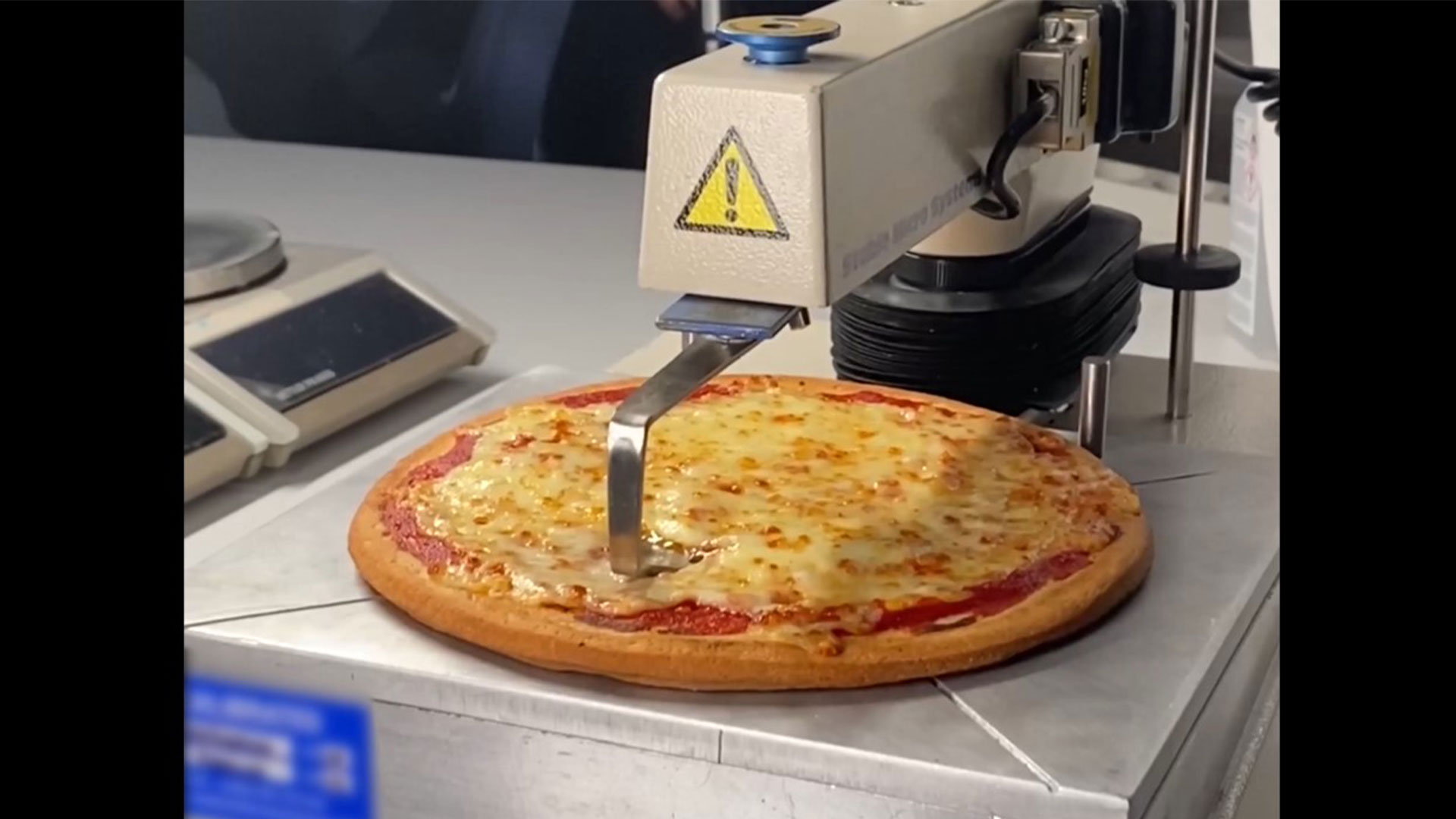Even though Italians have produced mozzarella for centuries, food scientists still try to understand exactly which properties give the cheese optimal stretchiness when baked. Mozzarella—unlike most other cheeses—is kneaded during production giving it a stringy consistency, but how precisely this unique structure correlates to its baking properties is still a bit of a mystery.
PhD student Pawel Pieta from DTU is on a mission to find the exact microstructure of the hard-to-scan cheese. He uses CT-scans to produce 3D-images of it. His work is part of an Innovation Fund Denmark-funded research project that is headed by Scandinavian dairy producer Arla.
Ultimately, the aim is to correlate information about the structure of a sample with its functional properties. Connecting the dots between a well-performing batch of mozzarella and its composition is key to determining the perfect recipe and thus consistently produce the desired quality.
Tackling technical challenges
Anyone who has had a CT-scan at a hospital knows that it takes only a few minutes. This is due to the density of our bones, which makes them good at stopping the X-rays beamed at them.
“Proteins and fats—which mozzarella consists of—hardly stop X-rays at all. So, to not only register that there is actually a cheese here but also capture the structure inside, we have to take very long-exposure images and thousands of them to gather the information to create a 3D-image,” Pawel Pieta explains.
Hence, it has taken as long as 12 hours for the researcher to scan a 2x2x2cm block of mozzarella, which posed another challenge:
“At room temperature, cheese melts slowly. Even if it does not melt completely during the scan, it will go a bit soggy and change its shape. So, keeping the cheese at an appropriate temperature throughout the scan so it doesn’t melt has been a challenge,” he says.
The PhD student and his colleagues solved this issue by modifying a container to hold the hard-to-scan cheese, which they cooled by flushing cold ethylene glycol through the top and bottom of the container. They fitted the container with a fan to circulate the cold air.
The scans they have produced so far document that mozzarella—as expected— is anisotropic, meaning that the matter has a structure that by and large runs in the same direction. Anisotropic materials have different properties in different directions. Wood, for example, is very anisotropic which increases its tensile strength along the grain. Tensile strength is a measure of how much stress a material can withstand while being stretched before breaking. In the case of mozzarella being anisotropic makes it able to stretch more in some directions than others.




